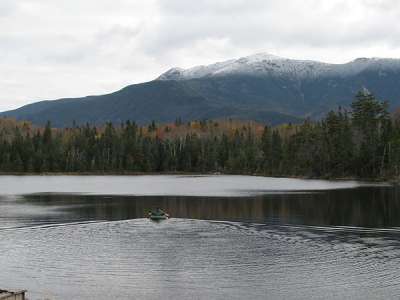
The Clean Air Act, passed more than 40 years ago, continues to provide positive outcomes. The latest good news comes from a University of New Hampshire environmental scientist who reports that lakes throughout New England and the Adirondack Mountains are rapidly recovering from the effects of acid rain. His research was published last summer in the journal Environmental Science and Technology.
William McDowell, director of the New Hampshire Water Resources Research Center, said that water bodies in the region “were under assault from the large quantity of acid going into the lakes and watersheds” prior to the Clean Air Act. Emissions of sulfur dioxide and nitrogen oxide were converted into sulfuric acid and nitric acid in the atmosphere and subsequently deposited on the land and lakes when it rained or snowed. But McDowell’s analysis of data collected since 1991 (he looked at 31 sites in New England and 43 in the Adirondacks) showed that sulfate concentrations in rain and snow declined by more than 40 percent in the 2000s, and sulfate concentrations in lakes are declining at an increasing rate. Nitrate concentrations are also declining rapidly.
“Long-term monitoring of lakes in New England started in the early 1980s to document whether the Clean Air Act works to clean up lakes,” McDowell said. “And the answer is, yes. They’re becoming less acidic and the water chemistry has improved to become more hospitable to lake biota.”
According to McDowell, several factors work together to reduce the acidity of lake water. Recently, rain and snow falling directly into lakes has been less acidic. This “replacement effect” is bolstered by soils filtering out acids before they reach the lakes. “The water is getting more and more pure in many of our lakes, so we’re getting to the point where it’s challenging to even measure it,” he said.
Not every lake is improving at the same rate – local soils and bedrock have an effect on a lake’s recovery rate – but almost all are improving. Whether the water quality in the lakes is back to “normal” is uncertain, since there is no water quality data prior to the 1980s. “It also gets complicated because some lakes are clean and clear and others are naturally brown with organic acids that come in from vegetation and wetlands,” McDowell said. “There is no one condition that is considered normal.”
While McDowell believes that the long term monitoring of lakes in the region has proven the effectiveness of the Clean Air Act, he and his colleagues plan to continue monitoring lake water quality to assess future changes to the environment. He is particularly interested in learning how climate change affects water quality, speculating that a longer ice-free period may lead to anoxic conditions and increased algal blooms.

